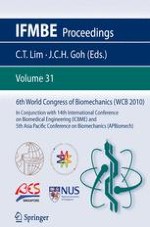2010 | OriginalPaper | Buchkapitel
Preparation of Nanoparticles of AB2 Triblock Copolymers for Doxorubicin Delivery
verfasst von : Y. L. Li, Y. T. Chen, N. V. Cuong, M. F. Hsieh
Erschienen in: 6th World Congress of Biomechanics (WCB 2010). August 1-6, 2010 Singapore
Verlag: Springer Berlin Heidelberg
Aktivieren Sie unsere intelligente Suche, um passende Fachinhalte oder Patente zu finden.
Wählen Sie Textabschnitte aus um mit Künstlicher Intelligenz passenden Patente zu finden. powered by
Markieren Sie Textabschnitte, um KI-gestützt weitere passende Inhalte zu finden. powered by
Cancer chemotherapy is believed to be impeded by multidrug resistance (MDR) and nonspecific accumulation. This study used methoxy poly-(ethylene glycol) (mPEG, A block) and poly-(
ε
-caprolactone) (PCL, B block) to synthesize an AB
2
type amphiphilic block copolymer to encapsulate the anticancer drug, Doxorubicin (DOX). The molecular weight of copolymer was measured as 19 kDa by a gel permeation chromatography and 15 kDa by proton nuclear magnetic resonance. The amphiphilic block copolymer self-assembled into micelles and critical micelle concentration was 43.7×10
− 3
mg/mL. The particle size of empty micelle was 95.1 nm, while it decreased to 21.4 nm after loading with DOX, corresponding to a drug loading efficiency of 22.29%. In the in vitro release experiment, 50% DOX released from the micelles at pH 5 and 40 % at pH 7.4 in 48 hours. The nitric oxide assay indicated that the micelles could avoid recognition by macrophage. Rhodamine 123 assay using flow cytometer showed that the fluorescence of intracellular DOX was stronger in MCF-7/WT than that of MCF-7/ADR. The half lethal dose (IC
50
) of DOX-loaded micelles for MCF-7/WT and MCF-7/ADR were 0.285
μ
g/mL and 7.476
μ
g/mL, respectively. These values are about 7.9-fold higher than the IC
50
of free DOX for MCF-7/WT and MCF-7/ADR at 0.036
μ
g/mL and 0.937
μ
g/mL, respectively. This can be due to a slow release rate of DOX from micelles. Confocal images showed that DOX-loaded micelles accumulated mostly in the cytoplasm instead of nuclei. On the contrary, free DOX diffused throughout the cells. Flow cytometry histograms indicated that the number of MCF-7/ADR cells under the same fluorescence intensity was about 83.16% and 50.91% for DOX- loaded micelles and free DOX, respectively. In conclusion, the DOX-loaded micelles formed by AB
2
copolymer was able to overcome multidrug resistance of breast cancer cells as it can accumulate more in MCF-7/ADR cells compare to free DOX.
